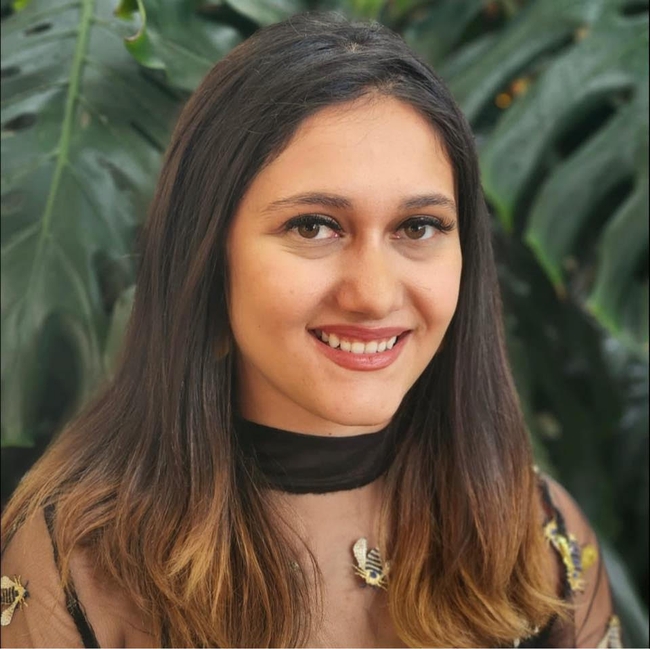
The event, free and family friendly, will take place in Room 1124 of the Academic Surge Building, 455 Crocker Lane, UC Davis. Parking is also free.
Among the presenters will be
- Lynn and Bob Kimsey of the UC Davis Department of Entomology and Nematology faculty. Lynn, a hymenopterist, is a UC Davis distinguished professor who teaches general entomology and the biodiversity of California insects and serves as the director of the Bohart Museum, and Bob is a forensic entomologist, specializing in public health entomology; arthropods of medical importance; zoonotic disease; biology and ecology of tick-borne pathogens; tick feeding behavior and biochemistry.
- Carla-Cristina "CC" Melo Edwards, a first-year doctoral student in the laboratory of medical entomologist-geneticist Geoffrey Attardo, associate professor of entomology, UC Davis Department of Entomology and Nematology. She will share her expertise on mosquitoes and show specimens.
- Moriah Garrison, senior entomologist and research coordinator with Carroll-Loye Biological Research (CLBR). She is scheduled to show live ticks and mosquitoes and field questions.
- Educators from the Sacramento-Yolo Mosquito and Vector Control District. They will discuss mosquitoes and their program
- Nazzy Pakpour, UC Davis alumna, Novozymes scientist and author of Please Don't Bite Me
- Jeff Smith, curator of the Bohart Museum's ;Lepidoptera (butterflies and moths) collection. He will display butterfly specimens collected globally. Also on the "Lep crew" are Bohart volunteers Greg Kareofelas and Brittany Kohler.
CC Edwards. In the Attardo lab, CC focuses her research "on investigating the physiological mechanisms underlying pyrethroid resistance in Aedes aegypti (the yellow fever mosquito)." She was a McNair scholar at Baylor University, where she completed her undergraduate degree in cell and molecular biology in May 2021. "I got interested in the mosquito field through my undergraduate research of studying the sensory and oviposition responses of Aedes aegypti in relation to the compound geosmin."
"I went on to do my masters at Texas Tech University under the advisement of Dr. Corey Brelsfoard where I graduated this past summer (2023)," she said. "I investigated the effects of microplastics in relation to the mosquitoes Aedes aegypti and Aedes albopictus (the Asian tiger mosquito). Plastic pollution has been a worldwide problem and research has shown that microplastics have been found in the guts of various organisms. With Aedes species being container inhabiting species, my master's research was focused on investigating if there are alterations of the mosquitoes' microbiomes and their immunity due to the ingestion of microplastics."
"When I am not in the lab, I enjoy getting involved with my local community by helping out and doing outreach," Edwards said. This past summer she helped the city of Lubbock, Amarillo, and the Texas Public Health Department by identifying mosquitoes for West Nile surveillance. She also served as the outreach chair for the Texas Tech Association of Biologists during her masters' degree pursuit and enjoyed being a mentor for first-generation students.
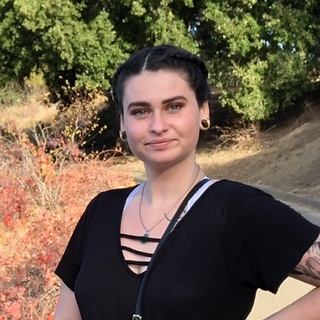
CLBR, involved in insect repellent testing and natural product development, is owned and managed by scientists Scott Carroll and Jenella Loye, a husband-wife team affiliated with UC Davis Department of Entomology an Nematology. Formed in 1989, the company serves the consumer products industry with testing, development and regulatory services for insect repellents, organic products, and low toxicity pesticides. Carroll, president of CLBR, is an evolutionary biologist, while Loye is a medical entomologist and microbiologist. Carroll holds a doctorate in biology/biological sciences from the University of Utah, while Loye holds a doctorate in zoology, microbiology and epidemiology from the University of Oklahoma.
Photography Displays. Professor Attardo, who maintains a lab website on Vector Biology and Reproductive Biology at http://attardo-lab.com, and chairs the Designated Emphasis in the Biology of Vector-Borne Diseases (DEBVBD), will display some of his mosquito images, including a blood-fed Aedes aegypti, and a female and male Culex tarsalis. Alex Wild, a UC Davis doctoral alumnus and curator of entomology, University of Texas, Austin, will display an image of mosquito larvae that currently hangs in Briggs Hall, home of the UC Davis Department of Entomology and Nematology. Wild's insect images can be viewed on his website, https://www.alexanderwild.com.
Petting Zoo. A popular attraction is the live petting zoo; visitors are encouraged to hold or get acquainted with live Madagascar hissing cockroaches and stick insects.
Family Arts and Crafts Activity. The event will be held outside and will highlight two collecting techniques, said Tabatha Yang, education and outreach coordinator.
- Clear Packing Tape Art. "Clear packing tape is a good way to collect small, hard-to-see insects," Yang said. "Glitter will mimic small insects like fleas or bed bugs. Putting the tape on white paper makes it easy to look at them under a microscope and for this craft it will make a pretty card."
- Making insect collecting or "kill" jars. Participants are asked to bring a recycled jar. "This should be a clean and dried glass jar with a wide, metal top--think jam, pickle, peanut butter jars. Four to 16-ounce jars work well. We will have some on hand as well, but recycling is good! We will fill the bottom with plaster of paris and let it dry and teach people how to use it properly, using something like nail polisher remover containing ethyl acetate as the killing agent. A UC Davis Department of Entomology and Nematology video explains the procedure: https://youtu.be/s8yCzFGzbn8?si=71sNmA5l8NyP1zj0
Attached Images:
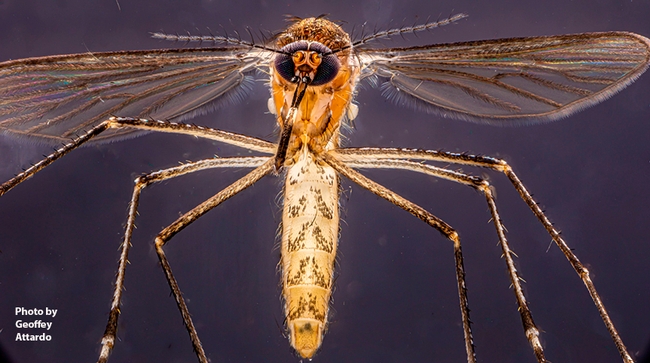
A female Culex tarsalis. (Photo by Geoffrey Attardo)
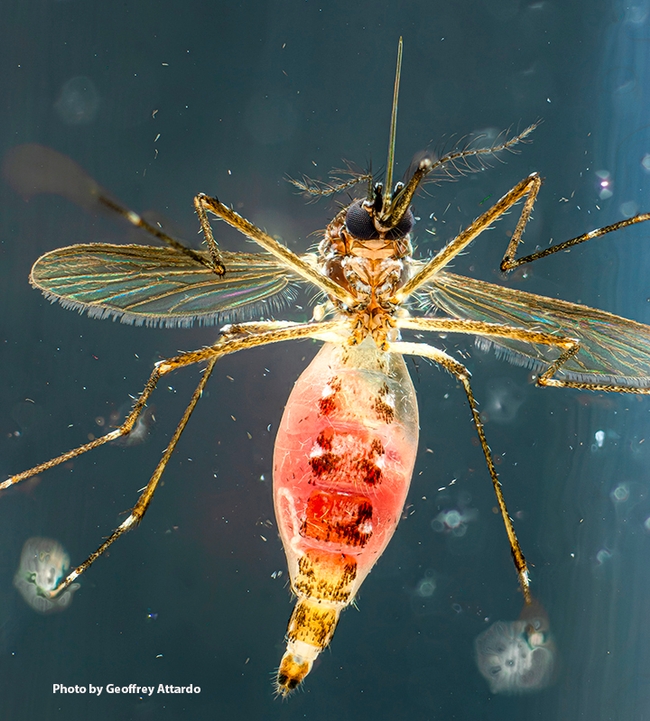
A blood-fed Aedes aegypti. (Photo by Geoffrey Attardo)
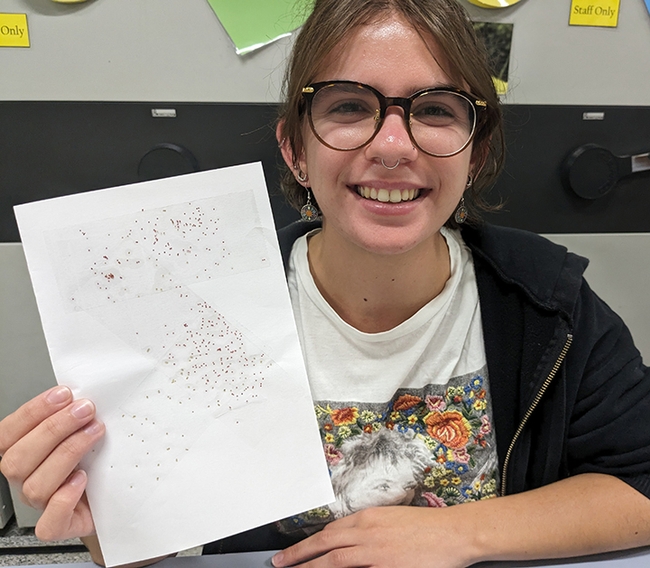
UC Davis transfer student Hanna Briggs holds a sample card showing how glitter mimics small insects. Briggs is an intern in the laboratory of Jason Bond, who is the Schlinger Endowed Chair, UC Davis Department of Entomology and Nematology, and associate dean, College of Agricultural and Environmental Sciences.